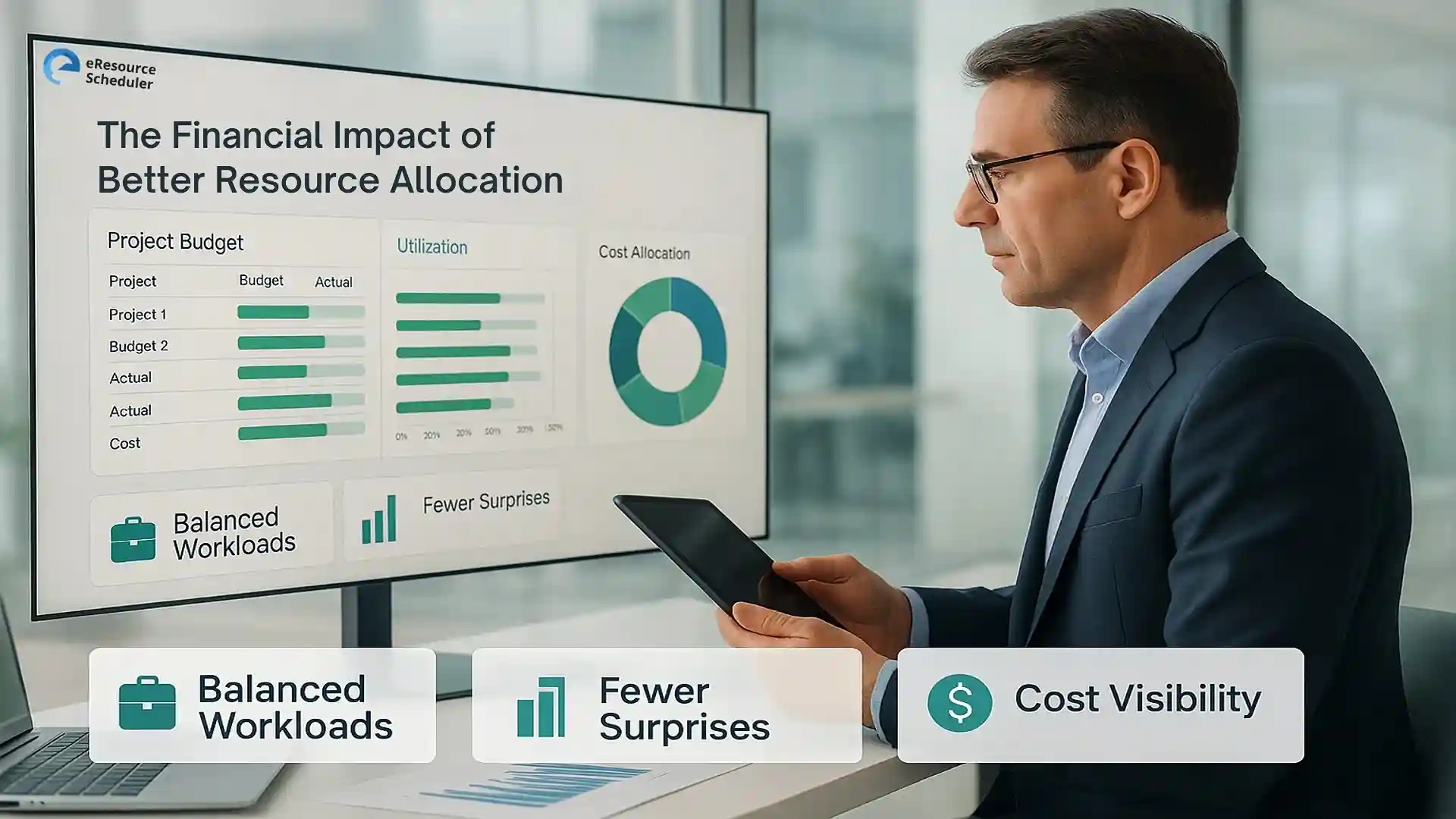
Every great project today is powered by collaboration, yet often complicated by it.
Marketing brainstorms with products. Engineering aligns with operations. Finance checks in with HR. Everyone is connected, but rarely on the same page.
Cross-functional teams were designed to bring agility. In practice, they sometimes bring confusion. Priorities overlap, workloads pile up, and timelines shift without warning. Each department follows its own rhythm, creating silos that slow progress and weaken accountability.
This is where resource scheduling software steps in as the quiet backbone of coordination. It gives leaders a single view of people, projects, and timelines so that visibility replaces guesswork and collaboration turns into real teamwork.
The challenge has never been getting teams to talk. The real test is helping them work in sync, even when their goals and tools are entirely different.
Cross-functional collaboration sounds efficient in theory, but anyone who has worked across departments knows how easily it can unravel.
When communication is fragmented and workloads are unclear, even the most talented teams end up spinning in circles. Some common friction points include:
These gaps are not about effort but structure. Even the most collaborative cultures need systems that help them see the full picture, who is doing what, how workloads align, and where adjustments are needed before problems snowball.
Cross-functional teams thrive when coordination feels effortless, not forced. That begins with clarity, transparency, and shared visibility across every moving part of a project.
When teams share projects but not priorities, alignment quickly disappears. This is where the right tools start to matter. A well-structured resource management and scheduling platform becomes the common ground that every team can rely on.
It brings clarity to three simple questions that often go unanswered:
By centralizing this information, leaders and team members gain a real-time view of people and projects. Workloads can be balanced, dependencies can be identified early, and the right people can be assigned based on skills rather than guesswork.
This visibility encourages accountability. When every team can see how their work connects to others, collaboration naturally becomes smoother. Meetings turn into decision sessions rather than status updates. Planning shifts from reactive to proactive.
Cross-functional alignment is not about forcing everyone to follow the same process. It is about giving them the same truth to work from.
Ever seen a team argue about whose deadline matters more? That’s what happens when everyone’s driving fast but no one’s looking at the same map.
Visibility is what fixes that. When all departments can see who’s busy, who’s free, and what’s coming next, coordination becomes effortless. Suddenly, marketing knows design is already overloaded, operations can plan better, and finance stops chasing last-minute surprises.
That’s the magic of good resource management software, it turns scattered updates into one shared view of reality. Everyone finally knows what’s happening, without sitting through another “quick sync” that’s anything but quick.
Here’s what that visibility brings to the table:
As the saying goes, “Sunlight is the best disinfectant.” In teams, that sunlight is visibility.

When projects start slipping, it’s rarely because the team is lazy. It’s usually because the numbers behind the work don’t add up. Hours get lost. Budgets get stretched. And suddenly, the project that looked simple on paper starts eating into margins.
That’s where better resource allocation steps in. When teams use data to assign the right people to the right work, everything changes.
Here’s what smart allocation does for your bottom line:
This isn’t just about keeping finance happy. It’s about giving every manager the power to make smarter trade-offs, whether that means pulling in more people for a big client or holding back on a project that’s eating too many hours.
Because when visibility meets accountability, cost control becomes second nature.
Cross-functional teamwork is no longer optional. It is how modern organizations move faster, think smarter, and deliver better results. But without structure, even the best teams can lose momentum.
Resource management and scheduling tools give that structure a heartbeat. They connect people, priorities, and plans in one place so that decisions happen faster and teams stay in sync without endless meetings.
When everyone has clarity, collaboration feels effortless. And when that happens, performance becomes predictable, projects stay on budget, and clients notice the difference.
If your team could use a little less chaos and a lot more clarity, maybe it is time to book a demo of eResource Scheduler and see how smarter planning turns collaboration into real results.
1. What does resource management and scheduling software actually do?
It helps teams plan, assign, and track work across departments. By showing who’s available, what’s booked, and where overlaps happen, it keeps projects organized and teams aligned.The goal is to make collaboration smoother and reduce wasted time.
2. How can this software improve collaboration between different teams?
Cross-functional teams often lose time in coordination. A shared scheduling platform gives everyone the same visibility into tasks, deadlines, and workloads, which eliminates guesswork and helps departments work as one unit instead of separate silos.
3. Is this type of software useful for remote or hybrid teams?
Absolutely. Remote and hybrid teams rely on transparency to stay in sync. With real-time updates, shared schedules, and visibility into workloads, everyone can coordinate effectively, no matter where they’re working from.
4. What should I look for in a good resource management tool?
Choose one that offers clear visibility, flexible scheduling, reporting, and time tracking. The best tools also support multiple projects, handle skill-based allocations, and integrate easily with your existing workflow to avoid tool overload.
5. How does better resource allocation affect project success?
Efficient resource allocation ensures the right people are working on the right tasks at the right time. This balance reduces burnout, controls costs, and improves project delivery, all of which contribute directly to client satisfaction and profitability.
Plan Smarter. Schedule Faster.
Join thousands already using eResource Scheduler to align teams, time, and tasks seamlessly.